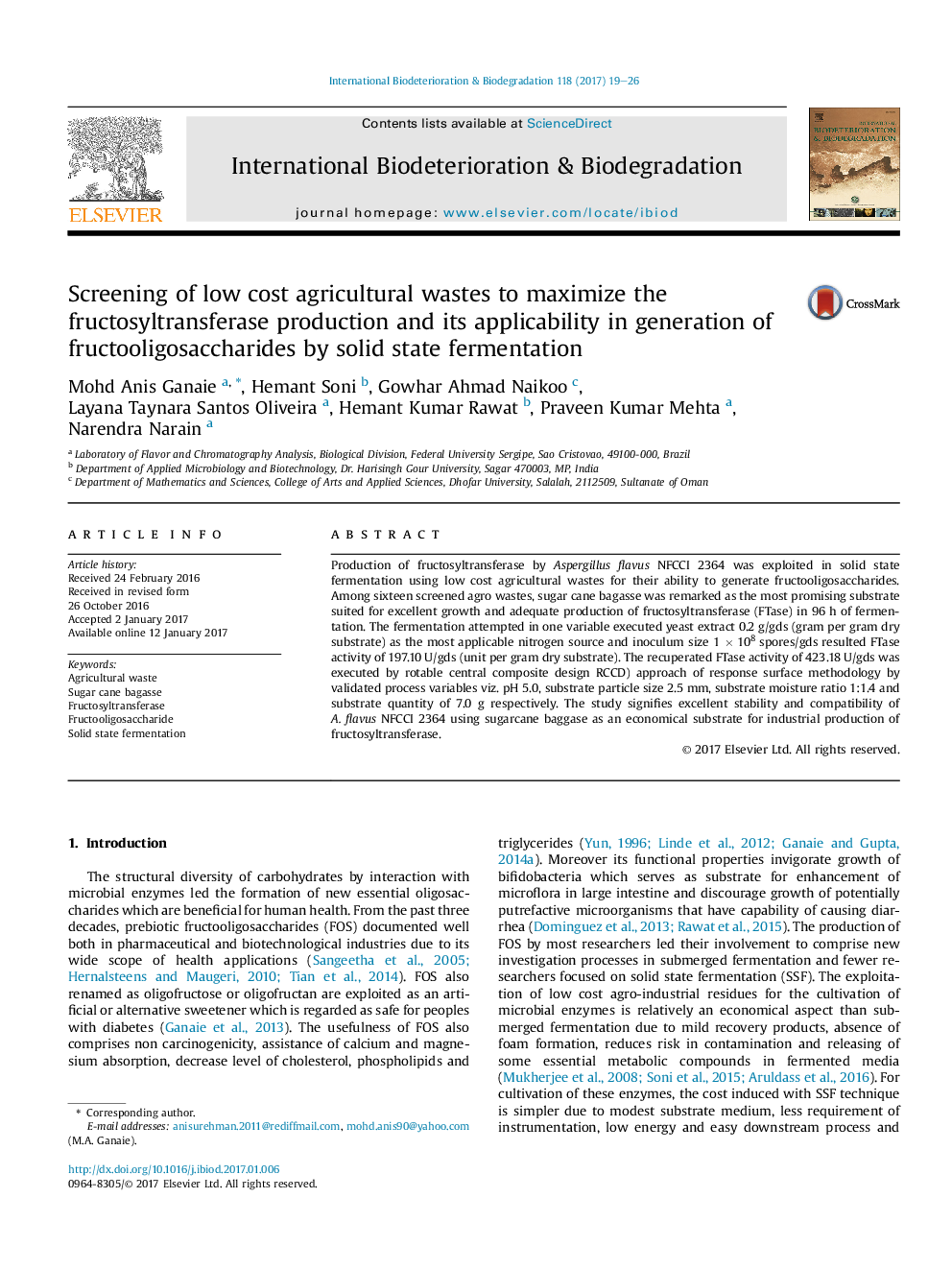| Article ID | Journal | Published Year | Pages | File Type |
|---|---|---|---|---|
| 5740549 | International Biodeterioration & Biodegradation | 2017 | 8 Pages |
â¢Sixteen agricultural wastes were exploited as solid substrates for fructosyltransferase (FTase) production.â¢Scanning electronic microscopic study revealed that A. flavus NFCCI 2364 potently degrade sugarcane bagasse.â¢Statistical optimization endeavored by rotable central composite design (RCCD) attained twofold FTase cultivation than un-optimized conditions.â¢FTase executed by A. flavus generate economical production of fructooligosaccharides.
Production of fructosyltransferase by Aspergillus flavus NFCCI 2364 was exploited in solid state fermentation using low cost agricultural wastes for their ability to generate fructooligosaccharides. Among sixteen screened agro wastes, sugar cane bagasse was remarked as the most promising substrate suited for excellent growth and adequate production of fructosyltransferase (FTase) in 96 h of fermentation. The fermentation attempted in one variable executed yeast extract 0.2 g/gds (gram per gram dry substrate) as the most applicable nitrogen source and inoculum size 1 Ã 108 spores/gds resulted FTase activity of 197.10 U/gds (unit per gram dry substrate). The recuperated FTase activity of 423.18 U/gds was executed by rotable central composite design RCCD) approach of response surface methodology by validated process variables viz. pH 5.0, substrate particle size 2.5 mm, substrate moisture ratio 1:1.4 and substrate quantity of 7.0 g respectively. The study signifies excellent stability and compatibility of A. flavus NFCCI 2364 using sugarcane baggase as an economical substrate for industrial production of fructosyltransferase.
Graphical abstractDownload high-res image (219KB)Download full-size image
